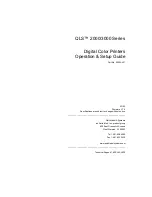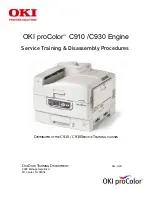
A795 User Guide: Programming Supplement
Chapter 4: Programming commands
82
Send printer software version
ASCII
AX V
Hexadecimal
1F 56
Decimal
31 86
The printer returns 8 bytes containing the boot and flash
software version. The first 4 bytes returned are an ASCII
string for the boot version.
The second 4 bytes are an ASCII string for the flash
version. Example: For 1.234.56 (8 bytes), the boot version
is 1.23 and the flash version is 4.56.
Real time commands
The real time commands provide an application interface to the printer even when the printer is not
handling other commands (RS-232C communication interface only):
•
Real time status transmission: GS (Hex 1D) sequence and DLE (Hex 10) sequence
•
Real time request to printer: GS (Hex 1D) sequence and DLE (Hex 10) sequence
•
Real time printer status transmission
The batch mode printer status commands are placed in the printer’s data buffer as they are
received and handled by the firmware in the order in which they were received. If the paper
exhausts while printing data that was in the buffer ahead of the status command, the printer
goes busy at the RS-232C interface and suspends processing the data in the buffer until paper
is reloaded. This is true for all error conditions: knife home error, thermal printhead overheat, etc.
In addition, there is no way to restart the printer after a paper jam or other error, when using batch
mode status commands.
The real time commands are implemented in two ways in order to overcome the limitations of
batch mode status commands. Both implementations offer the same functionality; which one you
choose depends on the current usage of your application.
Preferred implementation
For a new application the GS (1D) sequences are
recommended to avoid possible misinterpretation of a
DLE (0x10) sequence as a clear printer (0x10 0, ASCII
DLE NUL) command.
An application using these GS (1D) sequences, does not
need to distinguish for the printer between the new real
time commands and the clear printer command. This
implementation is ideal for an existing A756 application
that already uses the clear printer command or for a new
application being developed.
Alternate implementation
The alternate implementation uses the DLE (0x10)
sequences as implemented on other printers. An
application using these DLE (0x10) sequences and the
original A756 clear printer command (0x10) must
distinguish for the printer between the new real time
commands and the clear printer command by adding a
NUL (0x00) to the clear printer command.
An application using these DLE (0x10) sequences must
also send the second byte of the sequence within 100
milliseconds of the first, to prevent the first byte being
mistaken for a clear printer command.
















































